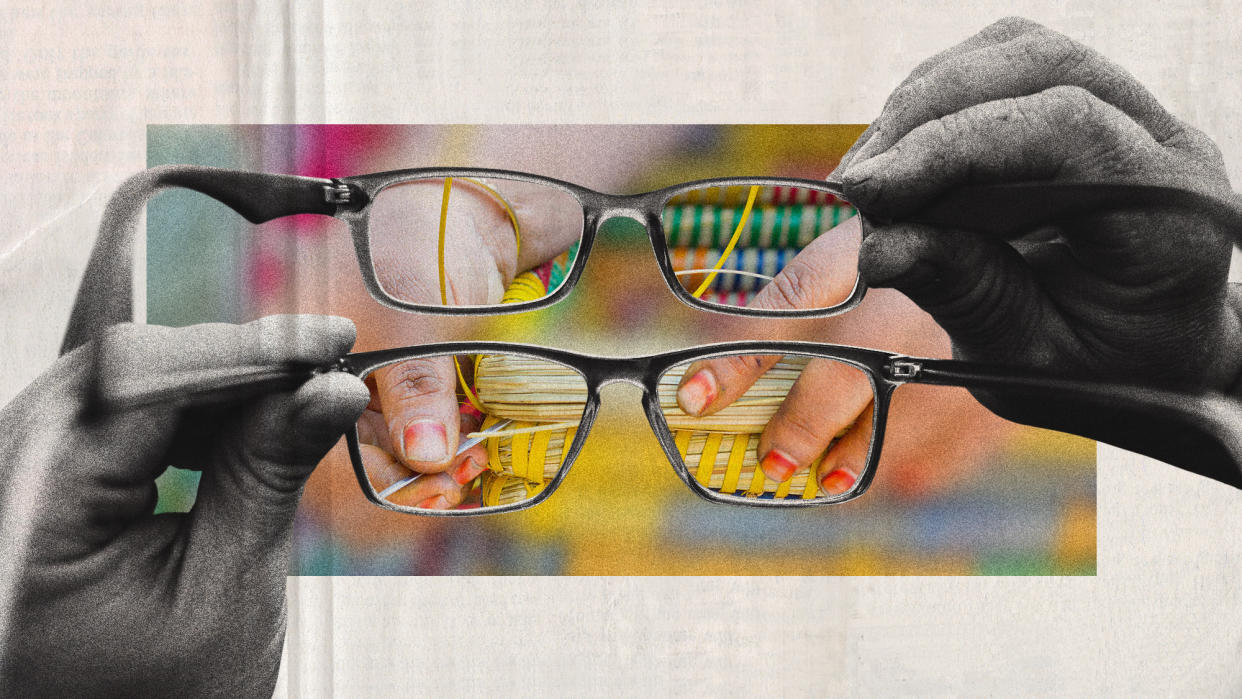Reading glasses could be an economic boost to people in low-income countries

It has been estimated that more than 4 billion people across the world wear some type of glasses, with reading glasses chief among those. However, while it is no secret that glasses can help people see and read, a new study has found that reading glasses might have an economic impact too, especially in more impoverished countries.
The study was published on April 3 by Queen's University Belfast in conjunction with the nonprofit groups VisionSpring and BRAC. The study examined people in a series of villages in Bangladesh, particularly those villagers suffering from presbyopia, or the "gradual loss of your eyes' ability to focus on nearby objects." The study concluded that providing these people with glasses "increases income in near vision-intensive occupations and may facilitate return to work for those currently unemployed."
While people in highly developed countries typically have access to reading glasses, people in third-world nations may have a harder time acquiring a pair, and this study shows that this could be a key factor keeping people in poverty. But how does the simple act of providing someone with reading glasses help boost third-world economies?
What were the study's findings?
The study set up an experiment in 56 Bangladeshi villages with more than 800 people, giving half of these people glasses while not giving glasses to the other half. The principal takeaway was that "income grew by 33% for those with glasses — from a median monthly income of $35 to $47," NPR said. Beyond this, previously unemployed people who were given glasses were able to enter the workforce, while those without glasses were not.
Demographics did not seem to make a difference either, as both groups had similar characteristics, the study said. The "mean age was 47 years, 50% were male, 35% literate," said the study. In addition, about half of the people in both groups had "most near vision-intensive" jobs. Given this, it appears that the main difference between the groups was, indeed, having glasses versus not having glasses.
This study is the "first time we can really say that something that will improve [someone's] quality of life from a visual standpoint will also help with poverty alleviation, which is an enormous finding," Dr. David Friedman, a professor of ophthalmology at Harvard Medical School, said to NPR.
Several examples were provided regarding cases where the simple act of providing glasses helped a person's income jump significantly. Farmer Jasmin Atker lives in Manikganj, Bangladesh, and after she was provided with glasses, her "improved vision enabled her to set up a vegetable patch," said NPR. This has helped Atker's monthly income rise from 9,000 to 10,000 Bangladeshi taka to 15,000 to 17,000 taka, or nearly $150.
"Before, when I tried to cut vegetables ... I couldn't see properly," Atker said to NPR. But since receiving glasses, the "time that I take for each task has reduced significantly."
Income boosts from glasses were not only seen in Bangladesh. Sarah Nakalyowa, a basket weaver from southern Uganda, would "use a needle and could not focus well while doing my work," she said to the Guardian. As her eyesight gradually worsened, it "took four days to do what used to take me a day. My income dropped to 100,000 to 150,000 Ugandan shillings a month," Nakalyowa said. But when she was provided with glasses, it made a "huge difference" immediately, Nakalyowa said, and the Guardian reported that her income is nearly back to its previous level.
How can people in low-income countries get glasses?
It is not easy — for "nearly a billion people in the developing world, reading glasses are a luxury that many cannot afford," The New York Times said. A "lack of resources was just one impediment to the increased distribution of reading glasses," Misha Mahjabeen, the Bangladesh country director for VisionSpring, said to the Times.
In Bangladesh and other similar nations, workers "must contend with the social stigma associated with wearing glasses, especially for women," Mahjabeen said to the Times. There is a silver lining, though, as the glasses in question are typically "nonprescription — they are essentially magnifying glasses, though they do come in different strengths," Phys.org said. This means they are significantly cheaper than prescription lenses, and "using village health workers, we can make the cost of delivery very inexpensive as well," Dr. Nathan Congdon, a coauthor of the study and Queen's University Belfast chair, said to NPR.

